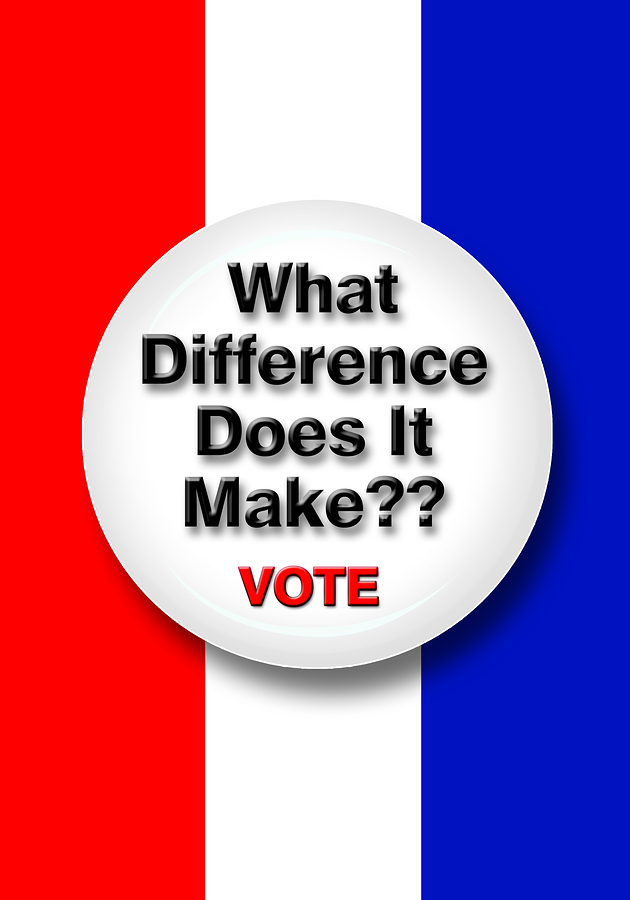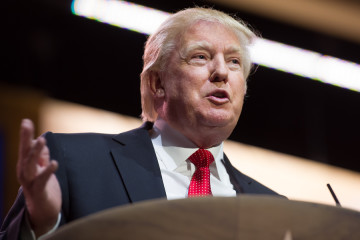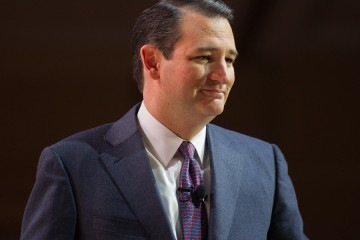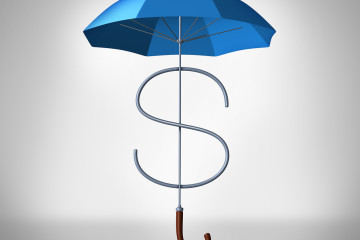In Los Angeles, Voting Is Getting the Silicon Valley Treatment

©2015 Bloomberg News
NRBTK36S9728
(Bloomberg Politics) — Last year, a bipartisan commission established by President Obama declared that the U.S. faces an “impending crisis in voting technology.” After the 2000 Florida recount showed the world that the American presidency could be determined by hanging chads, Congress set aside $3.3 billion, most of it to help local election officials upgrade their voting machinery. Bureaucrats with relatively little experience buying advanced technology rushed to purchase machines developed to satisfy the sudden demand. Those devices, designed in the years when Palm and Nokia owned the smartphone market, are mostly outdated. There’s no new money on the horizon, and even if local governments had the budgets for upgrades, they wouldn’t want the standard products currently available.
Now, Los Angeles County, the largest voting jurisdiction in the U.S., has hired IDEO, a design company with roots in Silicon Valley, to overhaul how it serves up democracy. IDEO has developed a touchscreen system that incorporates features familiar to voters used to scrolling and tapping. Election administrators across the country are closely watching the experiment. They want to know if L.A. can solve the problem of American voting. “For a long time people muttered that somebody should do something about this,” says Doug Chapin, who runs the University of Minnesota’s Program for Excellence in Election Administration. “What Los Angeles County is doing is just that.”
After the 2008 election drew record numbers to the polls, Dean Logan, L.A.’s top election official, decided it was time to replace the county’s obsolete machines, which are based on technology developed in the late 1960s. A nonprofit focused on helping disabled people vote connected him with IDEO, whose work includes creating Apple’s first mouse in 1980 and helping Bank of America use its website to encourage more savings in 2006. The county has signed two contracts with IDEO totaling $14.7 million. Logan has adopted IDEO’s philosophy and practices, such as keeping multicolored Post-it notes in his car for brainstorming sessions on the fly. “We wanted to focus on the voting experience,” he says. “We know if you have a bad experience the first time you vote, you have a lower chance of coming back.”
Design in the election world is driven by federal and state statutes. California code specifies that certain parts of the ballot be in “heavy-faced Gothic capital type not smaller than 30-point” and that voting boxes be “at least three-eighths of an inch square.” The regulations are supposed to create fairness, but the results “aren’t necessarily very usable,” says Chapin. “Los Angeles completely flipped that on its head. For them the unit of analysis, the polestar, was the voter.”
Los Angeles County has about 5 million registered voters, more than most states, and must print ballots in 11 languages, including Hindi, Khmer, and Tagalog. On any given election day, the county can print as many as 300 different ballots to cater to local races. And California’s ballots are long; in some years more than a dozen initiatives can be up for a vote alongside national, state, and local candidates, maxing out the number of questions that fit on the paper ballots.
IDEO studied voter behavior and found that, given California’s supersize ballots, people often arrive on Election Day with marked-up sample ballots. For those people, “voting is an exercise in transcription,” says Matt Adams, who’s leading the L.A. project. That prompted IDEO to create an interactive sample ballot voters can fill out on a computer or using a mobile app. When they go to vote, they can scan their code, like an airline boarding pass, from a paper printout or phone to automatically select their votes.
That’s the kind of insight that Logan, who started working in the election business as a temp the summer after high school, was hoping for when he hired IDEO. Logan set out a few basic parameters for the designers. Everyone had to be able to use the same device, whether they spoke Spanish, sat in a wheelchair, didn’t know how to Google, or were busy swiping right on Tinder. The system also had to produce paper ballots for an auditable trail. “You have competing interests,” Logan says. “Security and integrity don’t always parallel well with usability.”
In Texas, Travis County, which includes Austin, is also developing a new voting system, though it’s putting more emphasis on cryptography than design. The counties have gotten into hardware development because there simply isn’t a viable commercial market for election technology. Just four companies dominate the business, which is tightly regulated by state and federal commissions that must certify election software before it can be used. Merle King, who runs the Center for Election Systems at Kennesaw State University in Georgia, says the market is also plagued by inconsistent demand. Plenty of cities and counties need new machines, but it’s hard to predict when they’ll get the money to buy them. “Voting systems are infrastructure, and they have to compete with bridges, roads, ports, etc., for public funding,” he says. “There is a strong consensus that there will be no federal funding.”
In 2002, Congress passed the Help America Vote Act. California voters simultaneously approved $200 million to buy advanced machines. Across the country, local officials who manage elections flooded manufacturers with orders for touchscreen machines. Problems immediately became apparent. For one thing, researchers repeatedly showed the machines were vulnerable to hacking, prompting a wave of voter concern about security, though no U.S. election is known to have been attacked. The technology quickly fell behind as partisan wrangling stalled the confirmation of appointees to the U.S. Election Assistance Commission, which sets standards. The last revision of testing criteria was in 2005, two years before the iPhone was introduced.
At the time, L.A. County decided not to buy into the new technologies. Instead, it adapted its old punch card Votamatic machines to let voters use special pens to mark ballots that get fed into scanners instead of punching out chads. The system, InkaVote Plus, is deployed to about 5,000 polling places each election. Logan hopes the 2016 election will be the last presidential ballot counted on InkaVote. By the end of next year, he plans to put contracts out to bid for the IDEO-designed systems, which must be certified by the state before they can be used on a trial basis in the 2018 gubernatorial election.
L.A. has roughly $60 million in federal and state funding that it never spent. That won’t be enough to furnish thousands of polling places with the IDEO-designed systems, so Logan’s plan depends on the state legislature reducing the number of sites. Lawmakers in Sacramento have been considering bills that would reduce reliance on voting machines altogether, by increasing access to voting by mail and consolidating in-person voting into a few large polling centers that are open longer. That would make it easier for Logan to put IDEO’s system into production, since it would require the government to buy fewer machines.
IDEO’s developers are finalizing the designs. In May they tested the systems at a veterans’ center in L.A. When volunteer Debora Filter checked in at a desk, she said, “I’ve only voted once in my life, and that was for Obama.” “Wow,” the peppy poll worker replied. “Well, today you will get a chance to have your voice heard.” Filter was ushered to the prototype and swiftly ticked off selections in almost two dozen races, though she didn’t immediately see where to deposit the completed ballot, a stumble that IDEO’s addressing. Afterward, Filter told an IDEO researcher that when she last voted, in a grocery store, the ballot was confusing. This time, she found the design to be “very friendly.”
“It has to be modern, progressive, yet familiar,” says Blaise Bertrand, the head of IDEO’s design team. “If it’s too foreign, they’re not going to adapt to it.” The prototype—with headphones and remote controls for vision-impaired voters, legs that detach and fit into a wheeled carrying case, and a warm, wholly nonpartisan chartreuse exterior—is in the final design stages, and L.A. hopes to switch to the machines in time for the 2020 presidential election.
Here’s how it might work:
1. Check in: Poll workers give voters a piece of paper with a QR code tied to their home address. The code tells the machine which ballot to display. IDEO pushed for the county to use heavy card stock, which Bertrand says will feel “substantial”—like the act of voting.
2. Get situated: Voters take the paper to the booth and put it into a scanner. Their choices appear on a touchscreen, which tilts downward so voters in wheelchairs can use it. A privacy filter keeps people walking by from seeing the screen.
3. Make selections: Voters are prompted to pick a language. The races and ballot measures they’re eligible to vote on are displayed on the screen. Voters make their selections and review their choices when they’re finished.
4. Cast the ballot: The machine prints the voters’ choices on the paper and spits it out so the voter can confirm it’s accurate. Then voters feed the paper back through the scanner into a ballot box. The ballots are then collected for tabulation at a central location.
To contact the author on this story: Karen Weise at kweise@bloomberg.net To contact the editor on this story: Allison Hoffman at ahoffmangold@bloomberg.net







No Comment